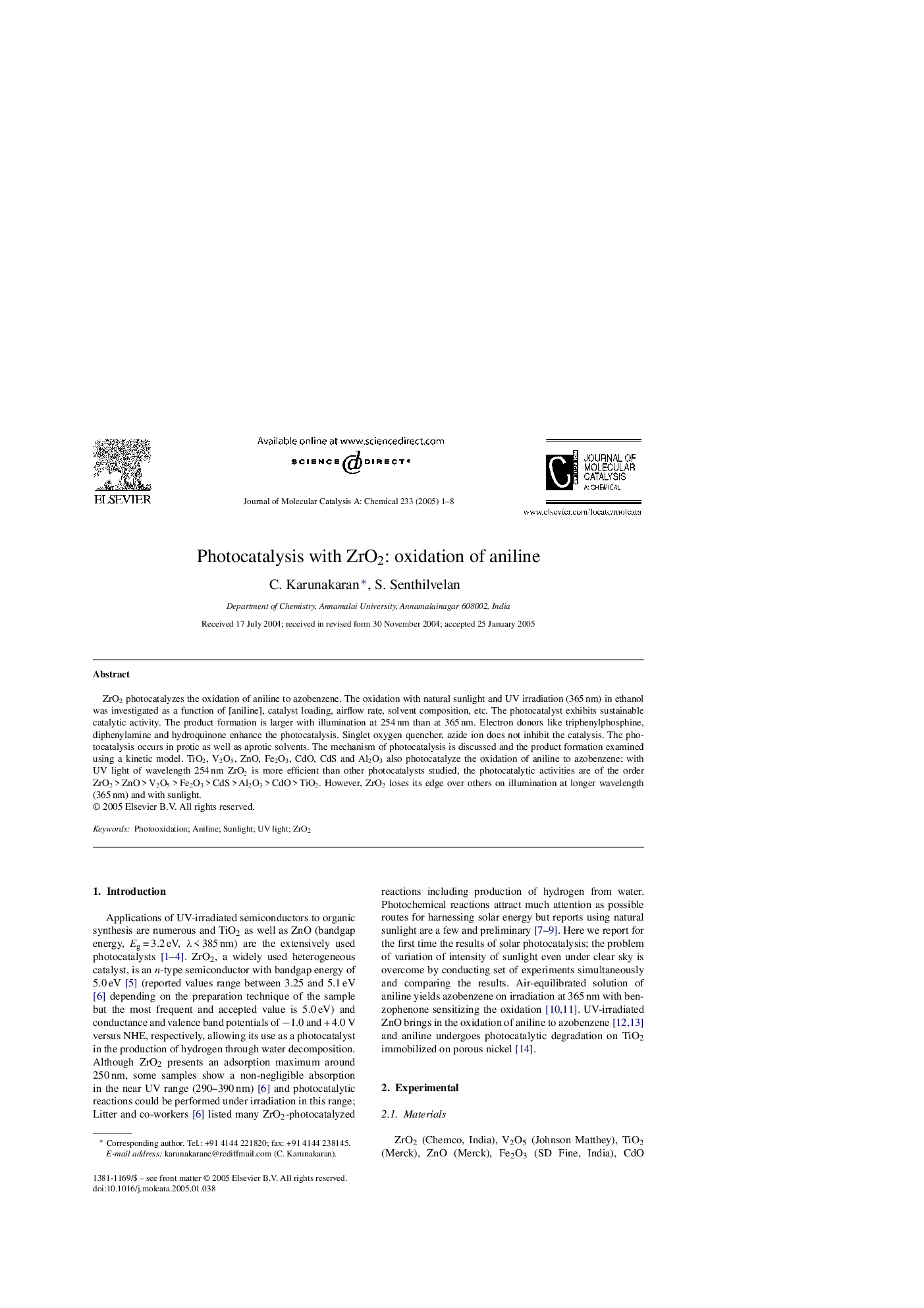| Article ID | Journal | Published Year | Pages | File Type |
|---|---|---|---|---|
| 9614709 | Journal of Molecular Catalysis A: Chemical | 2005 | 8 Pages |
Abstract
ZrO2 photocatalyzes the oxidation of aniline to azobenzene. The oxidation with natural sunlight and UV irradiation (365Â nm) in ethanol was investigated as a function of [aniline], catalyst loading, airflow rate, solvent composition, etc. The photocatalyst exhibits sustainable catalytic activity. The product formation is larger with illumination at 254Â nm than at 365Â nm. Electron donors like triphenylphosphine, diphenylamine and hydroquinone enhance the photocatalysis. Singlet oxygen quencher, azide ion does not inhibit the catalysis. The photocatalysis occurs in protic as well as aprotic solvents. The mechanism of photocatalysis is discussed and the product formation examined using a kinetic model. TiO2, V2O5, ZnO, Fe2O3, CdO, CdS and Al2O3 also photocatalyze the oxidation of aniline to azobenzene; with UV light of wavelength 254Â nm ZrO2 is more efficient than other photocatalysts studied, the photocatalytic activities are of the order ZrO2Â >Â ZnOÂ >Â V2O5Â >Â Fe2O3Â >Â CdSÂ >Â Al2O3Â >Â CdOÂ >Â TiO2. However, ZrO2 loses its edge over others on illumination at longer wavelength (365Â nm) and with sunlight.
Related Topics
Physical Sciences and Engineering
Chemical Engineering
Catalysis
Authors
C. Karunakaran, S. Senthilvelan,
